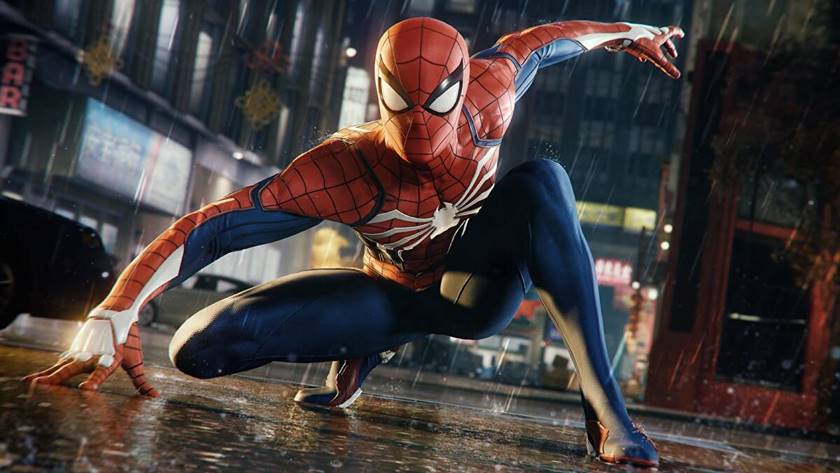This guide will help you achieve the best Graphics Settings for Marvel’s Spiderman in order to reduce lag and fix stuttering and fps drops.

Marvel’s Spider-Man PC Best Graphics Settings
It was back in 2018 when Marvel’s Spider-Man was first released on the PlayStation 4 console. PC users were upset just like the time they missed GTA V. After that we got the Remastered version of the same game in 2020 for the PlayStation 5 and finally today the game is out for PC.
I could not be happier as we had to literally wait for like 4 years to play this amazing game. Talking about visuals, PC users would be getting the Remastered version of the game similar to the PS5. It is pretty obvious that there will be a lot of visual improvement over the base version of the game.
Marvel’s Spider-Man is an extremely visually attractive game. Which makes it very obvious that you would need some good hardware to enjoy this game at it full visual depth. Users with configurations not strong enough would more likely have to sacrifice visuals to get smooth performance. Now let me tell you that smooth performance in Spidey games is an absolute must. You don’t want to be web-swinging around the city with tons of frame drops and stuttering which could literally make you dizzy.
Best Graphics for Marvel’s Spider-Man Settings to Fix Lag and Stuttering :
Before we jump into the Graphics Settings for this game let’s talk about the system requirements. There is no point in lowering the settings to a minimum and expecting smooth performance when you do not have the right hardware. You need to at least have a setup equivalent to the minimum requirements for this game. Take a look :
MINIMUM:
-
- Requires a 64-bit processor and operating system
- OS: Windows 10 64-bit
- Processor: Intel Core i3-4160, 3.6 GHz or AMD equivalent
- Memory: 8 GB RAM
- Graphics: NVIDIA GTX 950 or AMD Radeon RX 470
- DirectX: Version 12
- Storage: 75 GB available space
RECOMMENDED:
-
- Requires a 64-bit processor and operating system
- OS: Windows 10 64-bit
- Processor: Intel Core i5-4670, 3.4 GHz or AMD Ryzen5 1600, 3.2 GHz
- Memory: 16 GB RAM
- Graphics: NVIDIA GTX 1060 6GB or AMD Radeon RX 580 8GB
- DirectX: Version 12
- Storage: 75 GB available space
Display :
Display Mode :
- Monitor: Depends on what monitor you are using
- Window Mode: Fullscreen
- Display Resolution: Native monitor resolution. (Going higher would take a serious hit on performance)
- V Sync: On
Calibration :
- Brightness: User Preference
- HDR: Off
Upscaling :
- Upscale Method: Off (although you can improve performance through DLSS the visual quality somehow just doesn’t feel right. The resolution is forced down which makes it look blurry)
- Dynamic Resolution Scaling: Off
- Anti Aliasing: TAA
Graphics :
Texture
- Texture Quality: Medium (going higher brings performance down by a lot)
- Texture filtering: 2x Anisotropic
Light and Shadow :
- Shadow Quality: Low (Over the years I have learned that reducing shadow quality really helps you get a good boost in FPS)
- Ambient Occlusion : SSAO
- Ray Traced Reflections: Off (Well, you do not want to play with this on and expect to have smooth gameplay with an average PC. Ray Tracing takes a serious toll on performance)
- Screen Space Reflections: On
Geometry :
- Level of Detail: High
- Hair Quality: High
- Weather Particle Quality: High
Camera Effects :
- Depth of Field: High
- Bloom: On
- Lens Flairs: On
- Chromatic Aberration: On
- Vignette: Off
- Motion Blur Strength: 10
- Field of View: 5
- Film Grain Strength: 10
Well, there you go, these are the best graphics settings for Marvel’s Spider-Man Remastered on PC for the average PC. There are tons of visual settings in the game you could play around with and see which works the best. You just need to hit the sweet spot where you are satisfied with both the visuals and performance.
I hope the guide was helpful. Please let us know in the comments down below. Also, keep following FPS Index for more content related to Marvel’s Spider-Man.

Arya is an avid gamer and a full-time content writer. His love for games is so unconditional that despite having a degree in Mass Communication he chose to have a career in the blogging world. He is a FIFA lover and has played every single FIFA game released since 2005. His knowledge of Sports Games is impeccable and every single article he writes is backed by years of experience.

You lost me at Depth of Field : High, Chromatic Aberration : On, Motion Blur Strength : 10… Who plays like that??!! Console players unable to turn those god forbidden effects off?